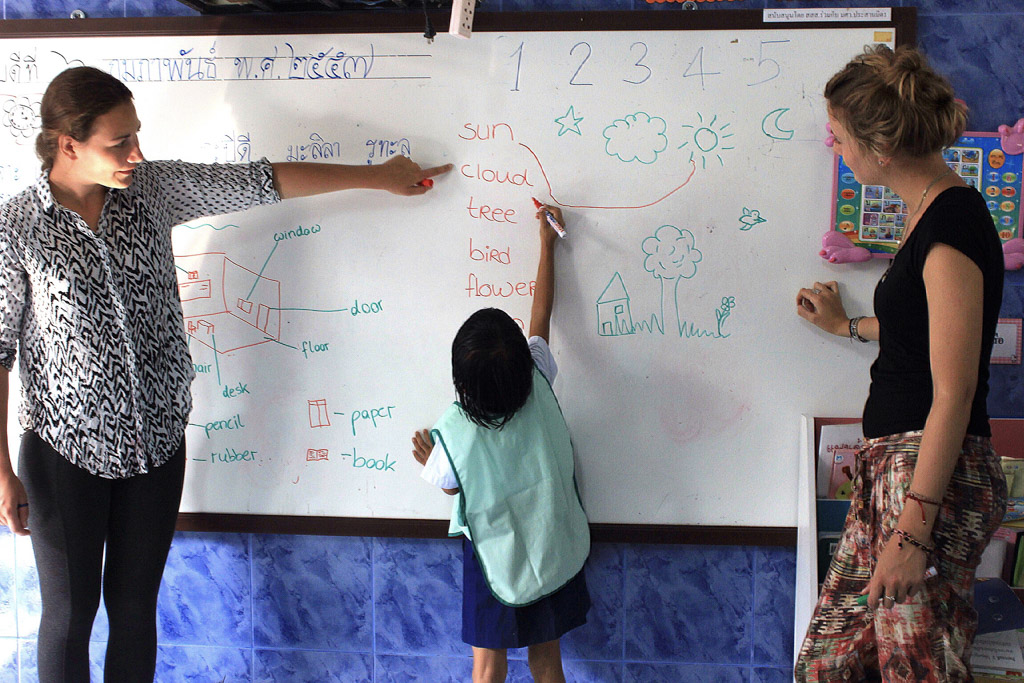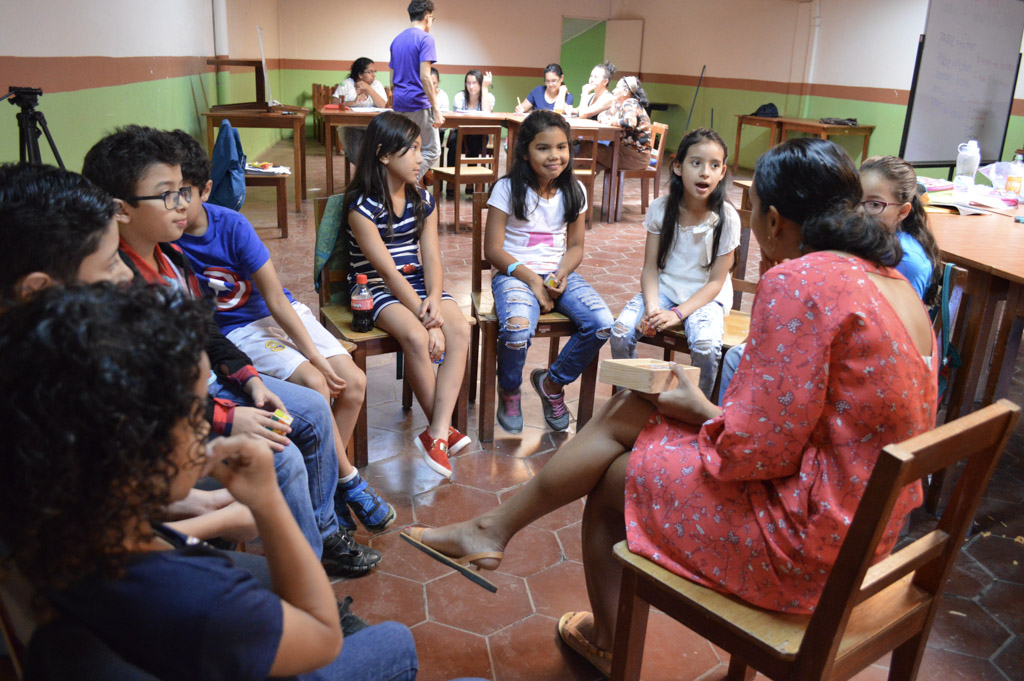Our teaching abroad projects are probably our most popular type of volunteer project we offer. Whether that is teaching kindergarten and primary school students basic English, helping secondary school students with English grammar, and other subjects, such as maths and geography, or educating local women who have not had the chance for an education.
Some of our projects, such as in South America and Vietnam offer teaching placements more suited to ESL or TEFL type teaching methods, and others are simply spending time with the children and teaching basic words and phrases and giving them the opportunity to speak and spend time with people from another country.
In this post we look at ways you can make your teaching abroad trip easier, get the most out of it and some general advice on how to approach your program.
Your motivations for teaching abroad
When teaching abroad, know what your motivations are and why you chose this project. Volunteers must go with the best intentions, i.e., to truly make a difference and not just to take cute pictures with the students! You must really have a passion for giving back and assisting the development of the children’s learning.
When you commit to a project and have a purpose of what you want to achieve, you will get the best results out of both yourself and the children. Putting the effort in and dedicating time to prepare your lessons is key to a successful placement.
Be prepared
The best way you can get the best out of your students and what you are teaching is to prepare well. Do not go into a lesson with a vague idea of what you will be teaching. Teaching abroad still requires lesson planning and evaluation of classes, just like in a classroom back home.
If you are unsure on how to lesson plan, have a read of our post on how to create a basic lesson plan.
On most of our teaching abroad programs there will be a dedicated time either in the mornings or afternoons where you will be able to prepare your lessons. Remember to bring any teaching materials you think may be useful.
Often, classrooms have very basic facilities and may not have flashcards, worksheets, paints, stickers, etc. Preparing your own flashcards and worksheets in advance can really help once you have arrived at your destination. In some places you may be able to go to a local print shop to print off any worksheets you have made (either by hand or using an online tool), but there may not always be this option. Print off some at home just in case!
You may also want to wait until you get to your project and aim to make use of the materials available to you. You may be able to find creative ways of making teaching materials yourself, and this way the local teachers can continue this after you have left!
Be professional
When teaching abroad you will want to give off a professional appearance to the students. Whilst it may be accepted to wear more casual clothes when teaching, dressing more conservatively may ensure the students and particularly the local teachers respect and take you more seriously.
Try observing what the local teachers are wearing and take guidance from that. Generally, you should aim to cover your shoulders and knees, and wear nothing too revealing, such as crop tops. This shows respect to the local staff and culture and gives off a more professional message to the students.
You should also aim to behave professionally, like you would do in a classroom back home. If wanting to take photos with the students, always ask the local teacher if this is ok, and ideally do this at the end of your program and not every time you have class.
Enrol in a TESOL course
TESOL, TEFL and ESL courses are readily available online. They all allow you to get paid for teaching abroad in some countries, and whilst this is not necessary for our volunteer projects, it is a fantastic way to gain more confidence in the classroom.
Just because you can speak English, does not mean you will be good at teaching it! Give yourself the right tools to be able to effectively pass on your knowledge of the language.
TESOL is short for ‘Teaching English to Speakers of Other Languages’ and you have the option of courses online, in person, or a bit of both. These courses are incredibly worthwhile and teach you so much about how to teach a classroom, advice on specifically teaching abroad, ideas for games and activities in the classroom, and the basics of English grammar.
Did you know there are 12 tenses in the English language? Many native speakers are unaware of this as it just comes naturally, but when trying to teach grammar, it is really important that you have an understanding yourself, in order to effectively teach.
An online course can be a great confidence booster and you will come away with so many new ideas and inspiration, which can give you a head start on your project and make teaching a classroom of eager students that much easier.
Know what has already been taught
When teaching abroad, volunteers will come and go, so it is important to ensure you understand the children’s abilities and what they have already been taught by previous volunteers. Admittedly this can often be difficult for the local teams to communicate to us on occasion, and sometimes you simply are just thrown in the deep end!
Try and reach out to us and we will contact the local team and ask if they are aware of what has been taught. If they are unsure, and a lot of times you will be faced with a class of kids who all have varying ability levels, then you need to have a plan for your first lesson.
Aim to create a small test or a general lesson to get the children talking and telling you what they know. Ask a lot of questions and you will soon learn by their responses how much they already know. Aim to have some easy stuff and some harder work to get an idea of who is at what level.
Then, you can adjust any worksheets and activities depending on the children’s needs. You may choose to separate the class into two, and have different activities based on abilities, or create an extension on a worksheet for those who finish it quickly.
When you leave your placement, write down in a journal or book what you have taught the students, what their abilities are and any suggestions you think may help the next volunteer. This ensures a continuation of learning and is less disruptive for the students.
Try and book a longer duration
Whilst many of our teaching programs have a minimum duration of a week, we highly encourage you to spend as long as possible on a teaching program. If you have the funds and time, then a minimum of four weeks is recommended, which gives you enough time to learn more about your students, and their abilities, and to have a bigger impact on their learning.
It also helps ease disruption to the class as students will get used to having the same teacher and become familiar with your teaching methods. The longer you can volunteer abroad for the better for both you and your students.
Communicate with the local teacher
Our teaching abroad programs can vary from you leading the class yourself or assisting alongside the local teacher. In either scenario, you should always communicate with the local teacher, to see what has been taught to the children already and how they go about teaching a class.
You have the opportunity not only to educate the children but to also share ideas and methods with the local teacher, who may benefit from speaking to a native English speaker. You may be able to give them some fresh ideas and new ways of teaching, or activities to try with the class, and they will be able to help you understand more of the local culture.
Understand the local culture
Teaching abroad can be a bit of a culture shock compared with classrooms back home, even for experienced teachers. We advise you to learn more about the local culture both before your trip and during the orientation on arrival.
We provide a pre-departure welcome pack for volunteers which will have extensive information on what to expect, but you should also talk to your local team and ask them to explain more on local customs. This can go a long way to understanding how the locals approach things.
Teaching in a classroom abroad can be a very different experience. Depending on the country, teaching styles can vary. For example, in Africa, many of the schools can be quite strict, or not place too much value on creative methods/ activities. In Fiji, the experience is much more laid back and you may have a lot of freedom to design your own classes.
By respecting the local culture and understanding that the local teachers may use methods you are not familiar with, or even comfortable with, can go a long way to settling into your placement. You may have to hold off on your own opinions sometimes and just go with the flow. This is all part of the learning process!
We hope you have found this post useful. By being preparing and putting in the work, you can truly get the best out of your students and your own experience of teaching abroad.
Take a look at all our teaching programs!
 Involvement Volunteers International
Involvement Volunteers International 



